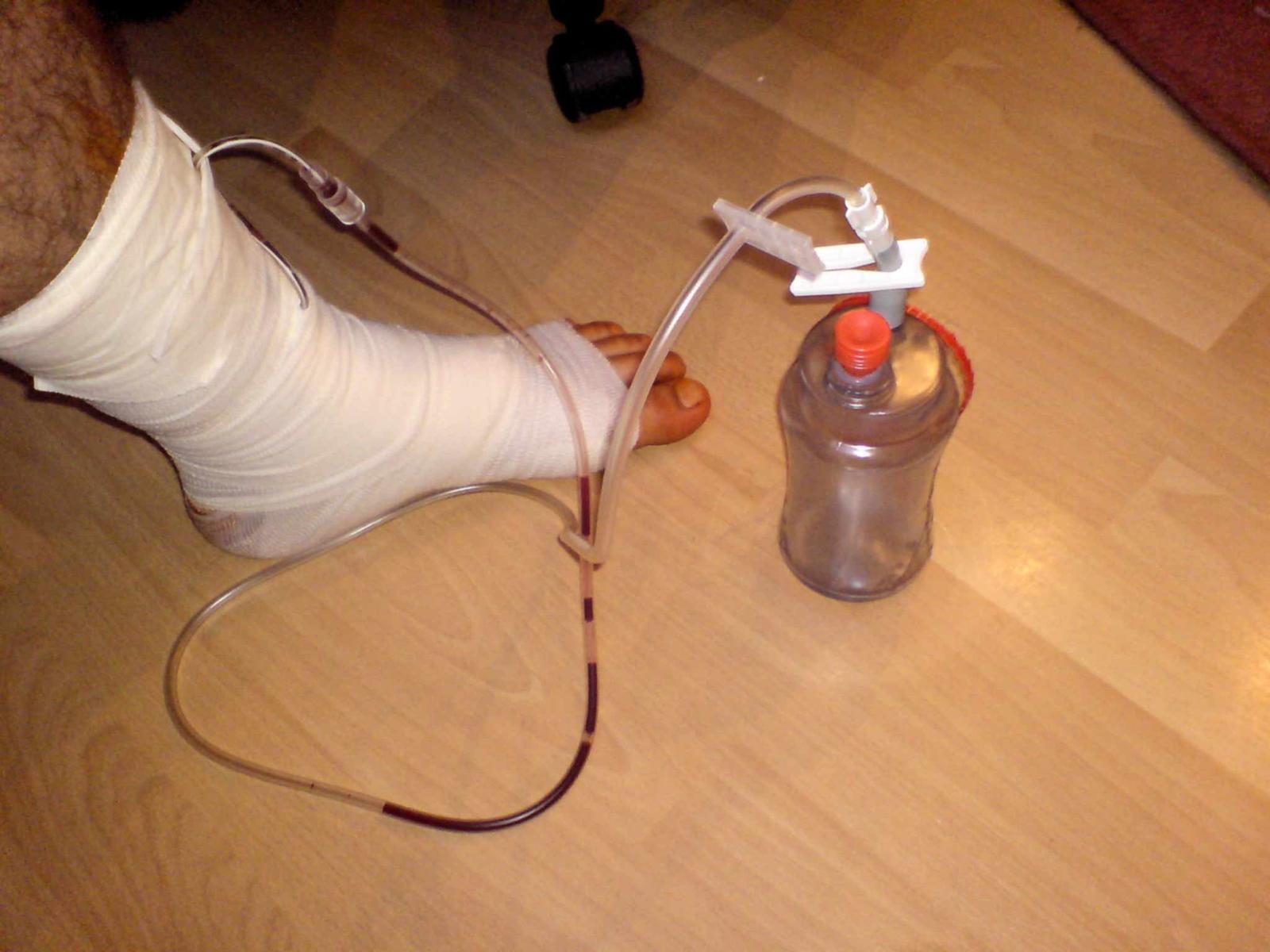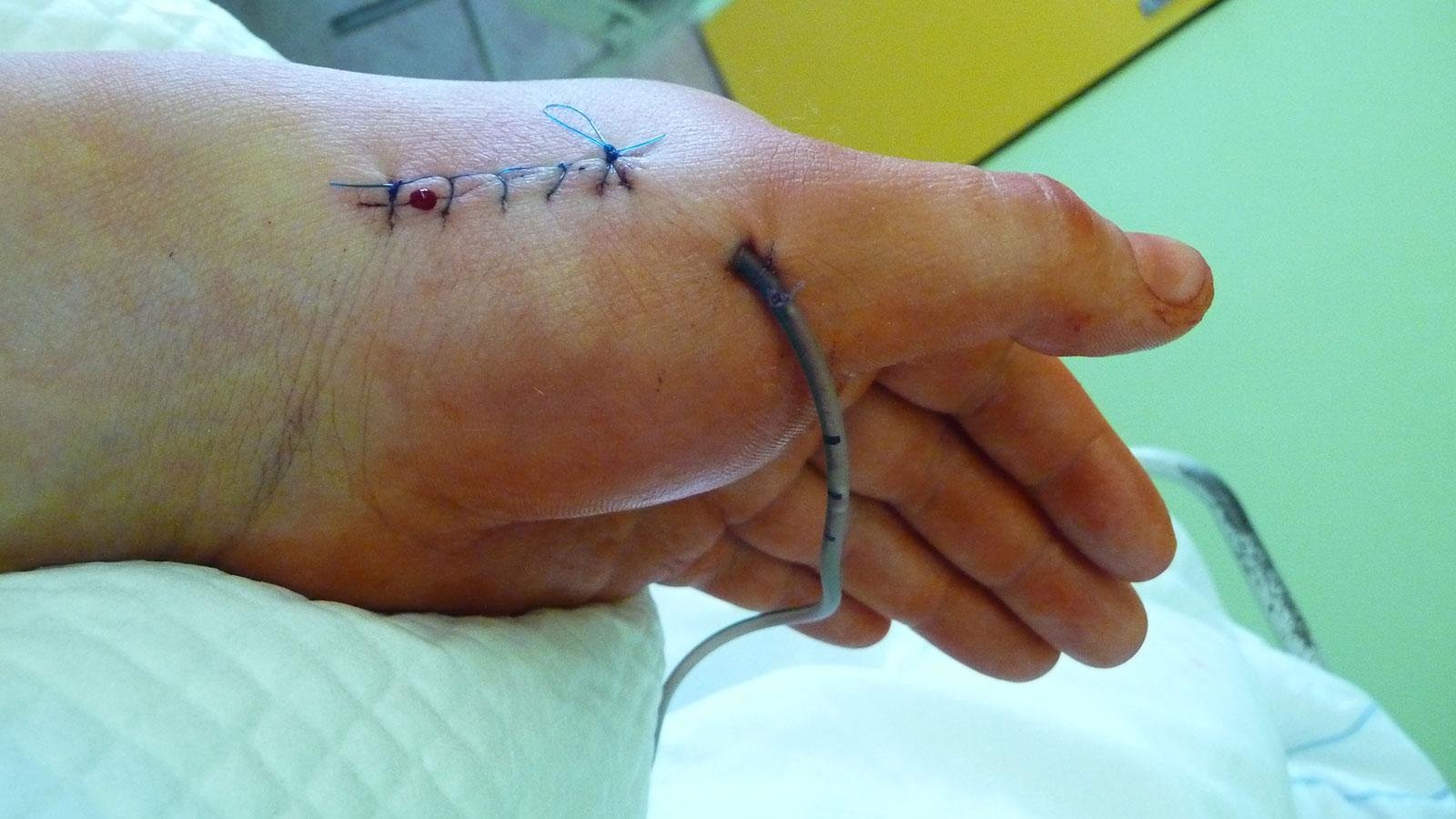Surgical drains
Peer reviewed by Dr Hayley Willacy, FRCGP Last updated by Dr Rachel Hudson, MRCGPLast updated 11 Feb 2023
Meets Patient’s editorial guidelines
- DownloadDownload
- Share
- Language
- Discussion
A surgical drain is a small plastic tube that is sometimes used after an operation. It is put inside you during the surgery by the doctor and will stick out of your body until it is removed, usually a few days later. It connects to a small plastic bag that collects any fluid or air that has drained away from where you had the operation. Not all operations require a drain to be in: your surgeon will advise you if one is necessary.
In this article:
Continue reading below
What is a surgical drain?
Surgeons use small plastic tubes to help drain away fluid after an operation: without them the fluid might gather up and cause infection. Or, in the case of an operation on the lungs or chest, air might gather up and squash the lungs.
They are usually special small, flexible plastic tubes which the surgeon places during the operation and then leaves poking out your skin, attached to a small bag.
This is an example of a drain coming out of someone's leg:
Surgical drain

By Christian Kazur, Public domain, via Wikimedia Commons
Although they look a bit gruesome, they aren't usually painful.
Here's an example of a surgical drain after hand surgery:
Hand surgical drain

By Pavel Ševela, CC BY-SA 3.0, via Wikimedia Commons
How useful are surgical drains?
Some operations involve quite 'juicy' parts of the body: areas where the body usually makes lots of fluid or juices. An example would be surgery on someone's armpit (axilla): this is often done as part of breast cancer surgery. The armpit makes a lot of fluid after being operated on. Without a drain, the fluid might gather up in a large pool and be painful.
The pressure of the fluid inside might stop the wound healing properly. So the surgical drain allows extra fluid to drain off harmlessly.
If you have had to have an emergency operation - for example, for a burst digestive tract (what doctors would call a perforated bowel) - then there can be infected juices left behind inside you. A surgical drain allows those juices to drain away and hopefully reduce the chances of getting an infection after the operation.
Continue reading below
How long do surgical drains stay in for?
Surgical drains usually stay in the body for a few days after an operation. When the fluid production has faded away, the drain can be removed painlessly.
Are there any drawbacks to surgical drains?
There are differences of opinion between surgeons as to whether surgical drains are always needed. Some studies have shown that they don't necessarily allow things to heal any faster. Other drawbacks include:
They can cause problems like infection around where the drain comes out; or they can interfere with things healing inside your body.
They can keep you in hospital longer.
Sometimes they can stop you moving around as much as you'd like, particularly if you have a drain from your chest area.
If they are left in for too long accidentally, they can be difficult to pull out and may leave a small tract which will take a while to heal up.
Continue reading below
Which operations require a surgical drain to be fitted?
Operations around the neck, including on the thyroid gland.
Operations on the armpit (axilla).
Operations done in an emergency for something which has ruptured inside you.
Some types of brain surgery.
Operations on the stomach (the drain often then comes out your nose and is called a 'nasogastric tube').
Operations on the bladder (the drain then usually comes out the urine tube and is called a 'urinary catheter').
Your surgeon will discuss with you before the operation whether you will need a surgical drain and where it will be.
Patient picks for Other surgery and procedures

Surgery and procedures
Colposcopy and cervical treatments
Colposcopy is a detailed examination of the neck of the womb (cervix). It is usually carried out in a colposcopy clinic by a doctor or specialist nurse.
by Dr Philippa Vincent, MRCGP

Surgery and procedures
Coronary artery bypass graft
Coronary artery bypass grafting (CABG) is a type of heart surgery to treat coronary artery disease. The standard surgery requires open heart surgery and stopping of the heart temporarily.
by Dr Doug McKechnie, MRCGP
Further reading and references
- Makama JG, Ameh EA; Surgical drains: what the resident needs to know. Niger J Med. 2008 Jul-Aug;17(3):244-50.
Continue reading below
Article history
The information on this page is written and peer reviewed by qualified clinicians.
Next review due: 10 Feb 2028
11 Feb 2023 | Latest version
18 Oct 2017 | Originally published
Authored by:
Dr Oliver Starr, MRCGP

Ask, share, connect.
Browse discussions, ask questions, and share experiences across hundreds of health topics.

Feeling unwell?
Assess your symptoms online for free
Sign up to the Patient newsletter
Your weekly dose of clear, trustworthy health advice - written to help you feel informed, confident and in control.
By subscribing you accept our Privacy Policy. You can unsubscribe at any time. We never sell your data.